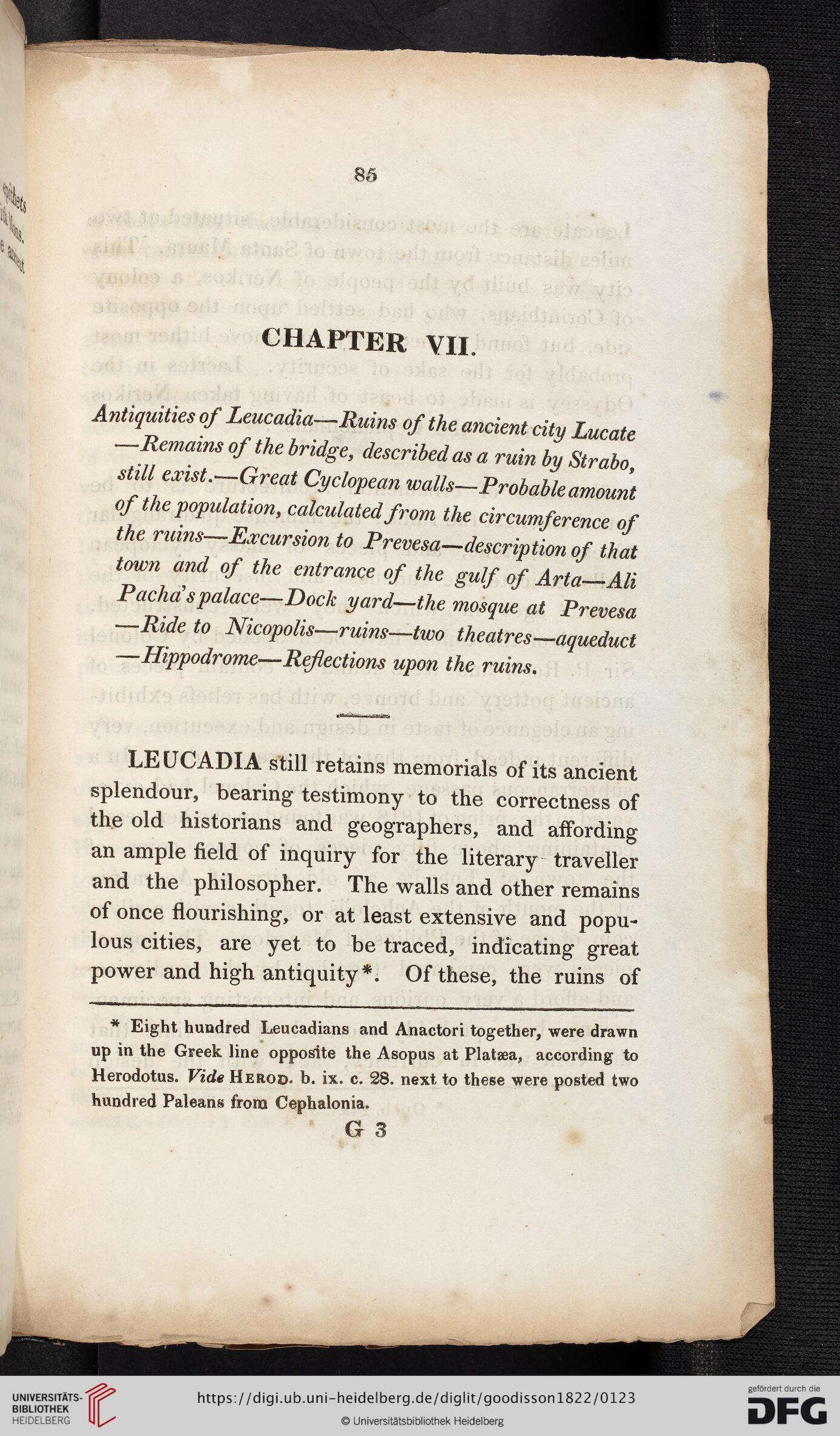85
CHAPTER VII.
Antiquities of Leucadia Ruins of the undent city hucate
—Remains of the bridge, described as a ruin by Strabo,
still exist.—Great Cyclopean walls—Probable amount
of the population, calculated from the circumference of
the ruins—Excursion to Prevesa—description of that
town and of the entrance of the gulf of Arta Ali
Pacha spalace Dock yard—the mosque at Prevesa
—Ride to Nicopolis—ruins—two theatres—aqueduct
—Hippodrome—Reflections upon the ruins.
LEUCADIA still retains memorials of its ancient
splendour, bearing testimony to the correctness of
the old historians and geographers, and affording
an ample field of inquiry for the literary traveller
and the philosopher. The walls and other remains
of once flourishing, or at least extensive and popu-
lous cities, are yet to be traced, indicating great
power and high antiquity*. Of these, the ruins of
* Eight hundred Leucadians and Anactori together, were drawn
up in the Greek line opposite the Asopus at Platsea, according to
Herodotus. Vide Herod, b. ix. c. 28. next to these were posted two
hundred Paleans from Cephalonia.
G 3
CHAPTER VII.
Antiquities of Leucadia Ruins of the undent city hucate
—Remains of the bridge, described as a ruin by Strabo,
still exist.—Great Cyclopean walls—Probable amount
of the population, calculated from the circumference of
the ruins—Excursion to Prevesa—description of that
town and of the entrance of the gulf of Arta Ali
Pacha spalace Dock yard—the mosque at Prevesa
—Ride to Nicopolis—ruins—two theatres—aqueduct
—Hippodrome—Reflections upon the ruins.
LEUCADIA still retains memorials of its ancient
splendour, bearing testimony to the correctness of
the old historians and geographers, and affording
an ample field of inquiry for the literary traveller
and the philosopher. The walls and other remains
of once flourishing, or at least extensive and popu-
lous cities, are yet to be traced, indicating great
power and high antiquity*. Of these, the ruins of
* Eight hundred Leucadians and Anactori together, were drawn
up in the Greek line opposite the Asopus at Platsea, according to
Herodotus. Vide Herod, b. ix. c. 28. next to these were posted two
hundred Paleans from Cephalonia.
G 3




